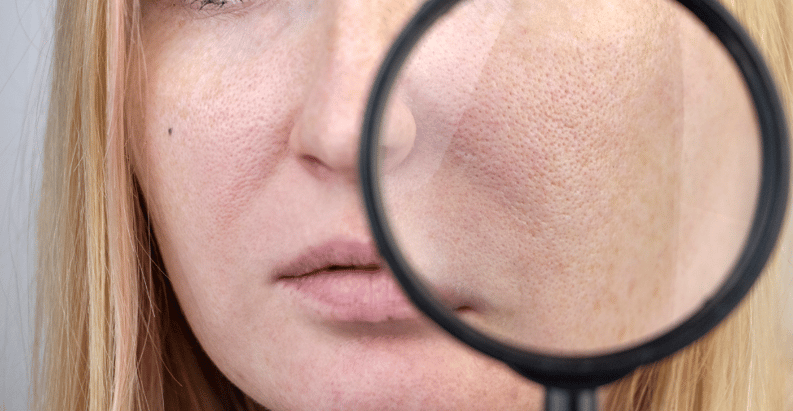The term "superfood" is commonly used to refer to foods of excellent quality and beneficial for our...
How to Treat Large Pores?

Some people don't feel comfortable with the size of their pores. Large pores tend to get clogged with sebum, dirt from the environment, and residue from makeup and skin products, which makes our faces look not-so-pretty.
If this is your case, we would love to tell you there is a magical solution to get rid of these awful large pores once and for all. However, dermatologists and skin specialists are very clear when they say that there is no way to close the pores 100%.
But do not worry! Its size can be reduced, and here we will tell you how.
First of all, you should know that the size of your pores is a physiological matter. It depends on your genetic condition and hormones. This means that the size of your pores is something like your hair or eye color. It's in your genetics.
However, not everything is lost. We might not be able to get rid of them 100%, but we can definitely make them less visible, and here we’ll tell you how.
How To Reduce Large Pores?
The first thing you need to do is keep your skin clean and avoid clogging your pores. To do that, you need to clean your skin every morning and night with the right cleanser for your skin type. Make sure to double-cleanse your skin at night, first with an oil-based cleanser and second with a water-based one.
In addition, it is necessary to introduce sebum-regulating active ingredients into your skincare routine; niacinamide and salicylic acid are great options.
Other active ingredients you can add to your routine are glycolic acid and retinoids, which even out the skin's surface.
Your daily habits are also essential; as I’m sure you already know, smoking and excessive sun exposure harm your skin and favor pores clogging.
There are various treatments that can help you reduce pores too:
-
Chemical peels with salicylic, glycolic, or retinoic acid.
They perform a chemical exfoliation, with the consequent effect on the texture and cleansing of the skin. The active ingredient used and its concentration must be individualized for each patient.
-
Fractional rejuvenation laser (ablative and non-ablative).
Non-ablative lasers induce heating at the level of the dermis, which stimulates fibroblasts (dermal cells), which will synthesize new collagen, which will improve skin texture and refine the pore. For their part, ablative lasers, in addition to producing deep collagen stimulation, add a superficial peeling effect, obtaining a more comprehensive result (rejuvenation).
-
Intense pulsed light.
The capture of light by the water in our skin generates the production of dermal collagen, with the consequent partial fibrosis and pore attenuation.
To achieve good results, 2-3 sessions of the chosen treatment are needed, according to the expert's recommendation. And then perform one or two maintenance sessions every year. As with home treatments, in-office therapies to make open pores less visible should be performed periodically to achieve good results.


.png?height=200&name=Blog%20images%20(13).png)
